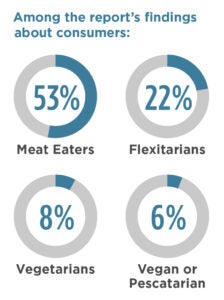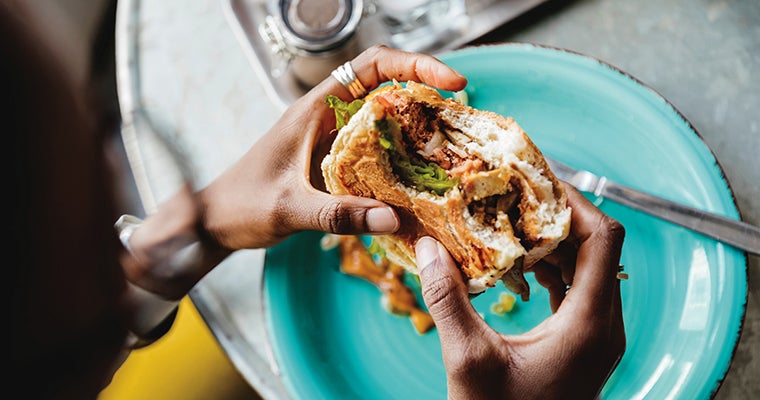Flavourful, chef-inspired dishes are key to winning with plant-based foods.
Restaurant operators seeking cuisine that’s ripe for growth should look no further than plant-based foods.
A Food Institute survey showed that 40% of consumers surveyed in March 2022 purchased plant-based protein and/or dairy alternatives within the past six months, with health cited as the motivating factor.
Of those people, half said it’s important for restaurants to offer plant-based options, but only about 20% choose those options when dining out. This suggests potential for growth and reminds operators to enhance the appeal of plant-based dishes, according to Maria Dalziel, a Gordon Food Service Product Specialist in Vancouver.
Find an audience
“I think it’s about having choices available,” Dalziel said. “People will jump on it if the menu is flexible and people can customize the dish they want to eat.”
One way to achieve that, she says, is to lean into vegetables for the sake of vegetables.
“I have worked with restaurants to help them create their own versions of vegan and vegetarian items that aren’t created in a lab or heavily processed,” she explained. “For example, compressed watermelon radish can simulate tuna poke.
Corn ribs were another of her creations. She cut a corn cob into eighths, marinated it and grilled it the same as a rack of ribs. The result was a similar mouthfeel and texture from a product that was purely seasoned vegetables.
The “Plant-Forward by the Numbers” report, conducted in 2021 by Datassential and the Culinary Institute of America, advised operators to look beyond meatless burgers and meat substitutes to see plant-forward eating as ripe for growth and chef-inspired creations. Among the report’s findings about consumers:
The take-away: Consumers reducing meat consumption are more likely to fall in the flexitarian middle ground than choose vegetarian or vegan diets.
Ingredients have growth potential
One avenue could be using plant-based chicken tenders or seafood in a taco or salad, Texas-based Culinary Specialist Matt Dummar suggests.
“It goes way beyond burger patties … plant based pizza toppings are definitely up and coming, and I’m not talking about vegan pizza, but using a plant-based sausage or pepperoni as an ingredient,” he said. “Also pasta dishes, with plant based-shrimp and sausage.”
Ingredients are one way to add plant-based culinary options, Dalziel said.
“There seems to be a big focus on baking solutions. Substitutes for eggs and butter in baking as well as yogurts,” she said. “The plant-based milk segment is going strong, with oat milks, coconut milk and soy milk. I just heard potato milk is a new item. I won’t knock it until I try it.”
To increase dining acceptance, Dalziel says it’s not necessary to call out vegan or vegetarian foods. She points to MeeT, a Vancouver restaurant that added mushroom calamari to the menu.
“It’s just mushrooms that are battered and fried, but it’s done in a way that mimics calamari,” she said. “People love the flavour and texture, not the fact that it’s made with plant-based ingredients.”
Plant-based skews young
Changing the eating habits of older consumers is hard, Dummar says, so ingredients are a gateway to success.
The real plant-based growth potential lies with health-conscious and younger consumers. A 2021 YPulse survey found 47% of 13- to 39-year-olds regularly eat or drink plant-based foods and beverages. The same survey showed 23% of consumers not eating plant-based foods are curious.
“I’m a Millennial parent with a 9-year-old son,” Dummar said. “He watches videos on YouTube about cooking and the history of plant-based foods. He’s more excited to try them than I am. They get the “why” of these products.”

























